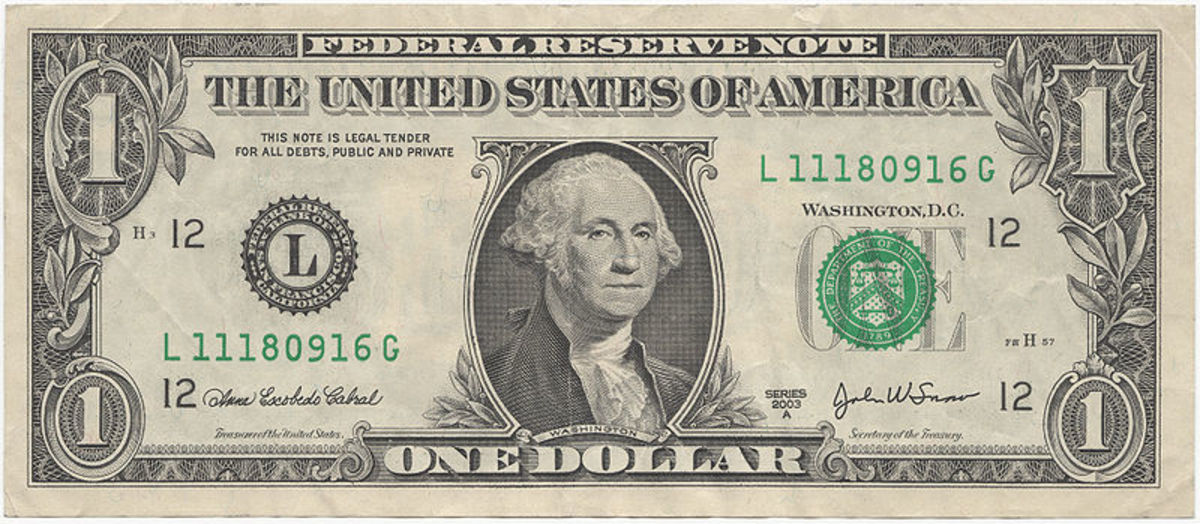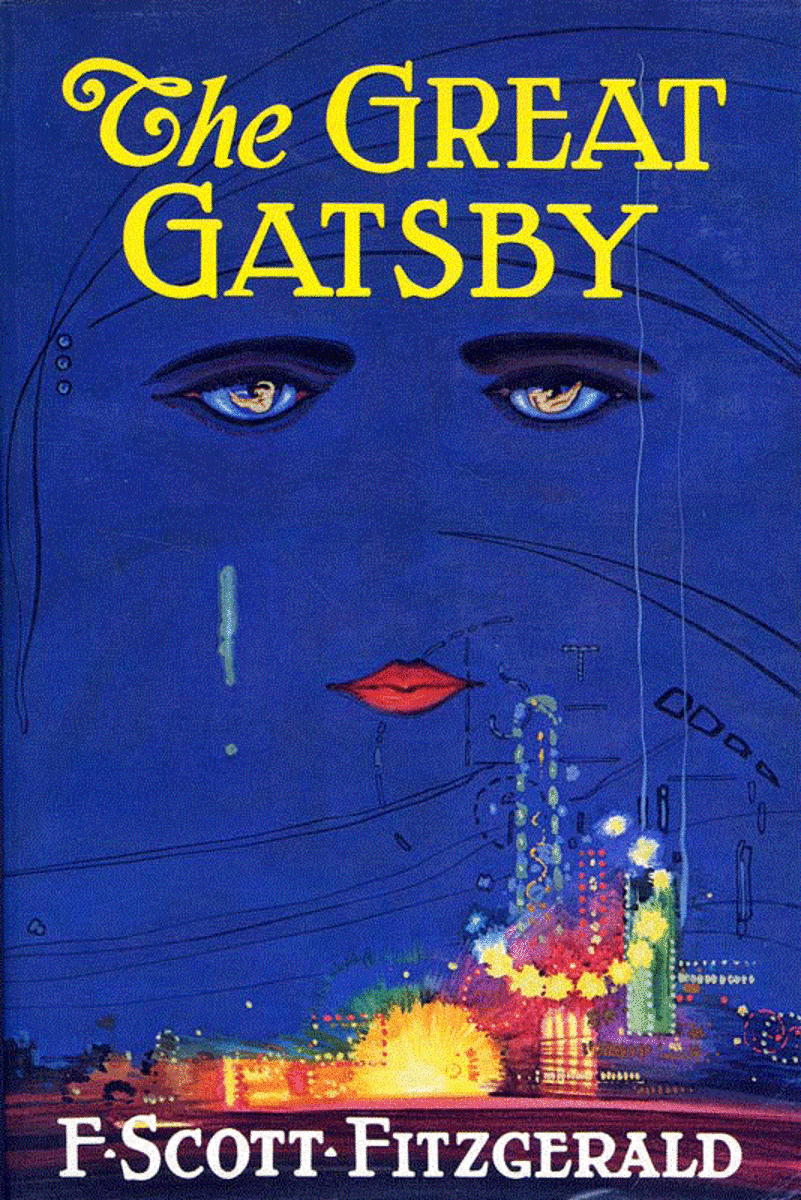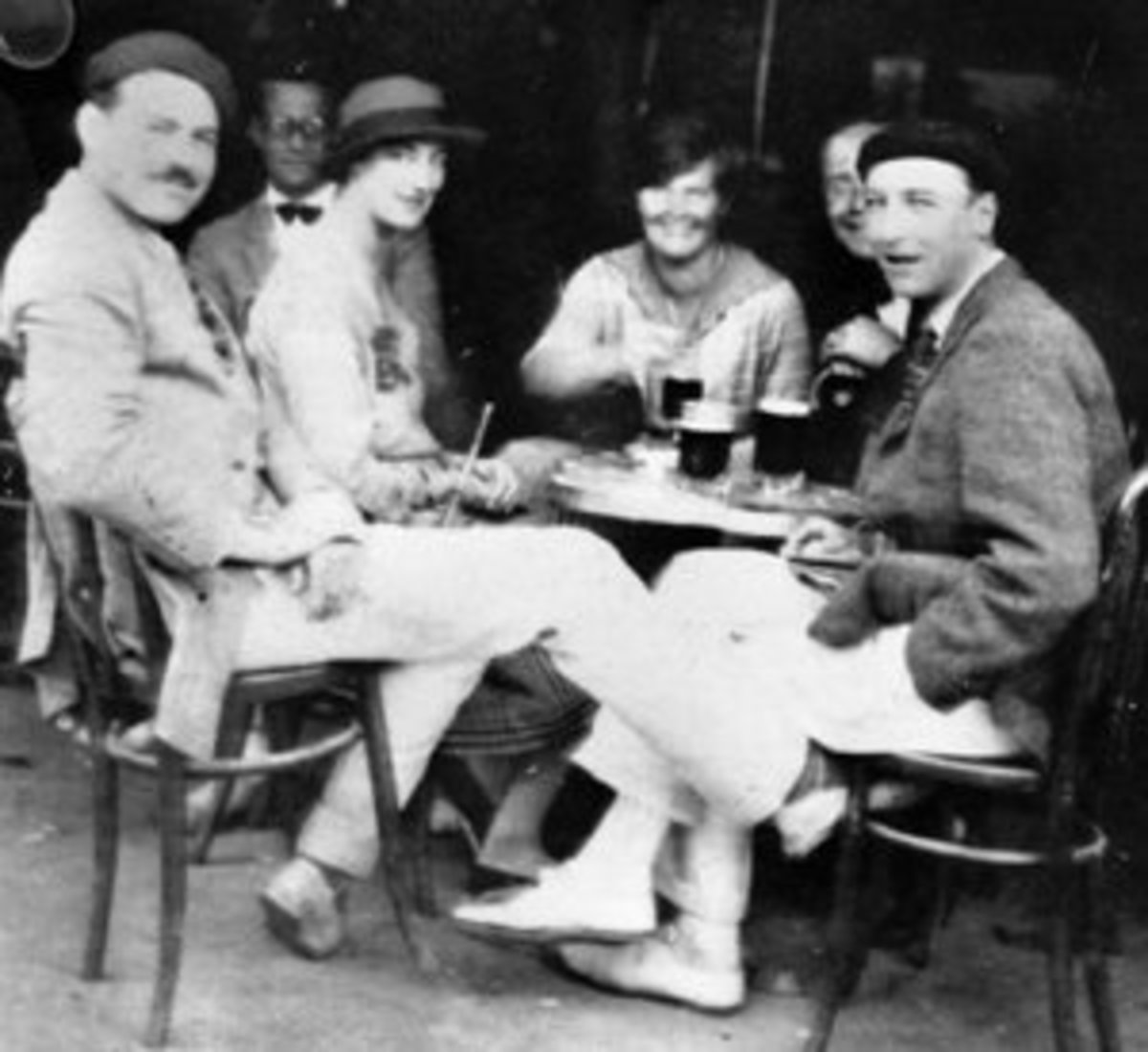F. Scott and Zelda Fitzgerald - the Jazz Age
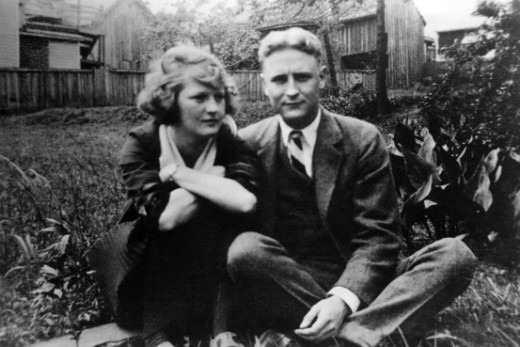
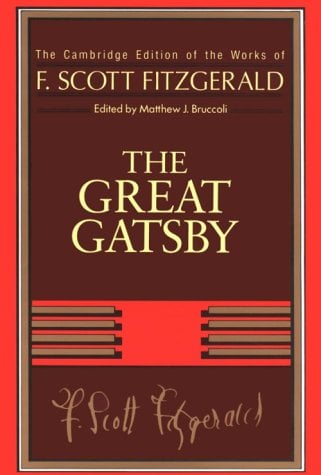
- The Great Gatsby - a film review
- Frances Scott "Scottie" Fitzgerald 1921-1986
F. Scott Fitzgerald with only daughter, "Scottie." Born to the most famous and celebrated couple of the 20th century, during the Jazz Age, an era that her father named himself, Frances Scott Fitzgerald was born in 1921 in St. Paul,
F. Scott Fitzgerald and his wife Zelda (Sayre) literally became the icons and celebrities of the Jazz Era during the 1920's. It was Fitzgerald himself that coined the term, the Jazz Age, in his writings about this era in our history.
And, it was his marriage to Zelda that fueled his best-known and greatest novel, The Great Gatsby (1925), depicting life in the fast lane for the Fitzgerald's and many of the upper super-wealthy class of the 1920's.
Most of his other novels, This Side of Paradise, The Beautiful and the Damned, Tender is the Night, and The Last Tycoon, also portray the empty values and shallow lifestyle of the rich during the Jazz Age, which he named the era because of his great interest in jazz music.
Only his novel, The Last Tycoon, left unpublished at the time of his death, was published posthumously at the urging of Zelda after Fitzgerald's death. It was completed and edited by Edmund Wilson, a book editor for Scribner's and published in 1941.
Fitzgerald had attended Princeton University and honed his writing skills there to the detriment of his coursework and dropped out in 1917 to join the U.S. Army. He was commissioned as a second lieutenant in an infantry division and stationed at Camp Sheridan outside Montgomery, Alabama.
It was here at a local country club that he met and fell in love with Zelda Sayre the daughter of a prominent Alabama Supreme Court justice. Zelda was known as the 'golden girl' of her social set and a leader in her young society scene.
Zelda was a spoiled and doted upon girl that had a definite appetite for attention. She was unconventional and it was only her father's reputation that saved her from social ruin. Her high school yearbook quotes her, "Why should all life be work, when we can borrow. Let's think only of today, and not worry about tomorrow."
In 1918, the war ended before Fitzgerald could be deployed to Europe, so he moved to New York City to work in the advertising agency, Barron Collier. He hoped to earn enough money to win Zelda's hand in marriage. The two corresponded back and forth and Fitzgerald eventually sent her an engagement ring, and Zelda accepted.
Scott and Zelda were now engaged, but Zelda eventually broke off the engagement because she believed Scott could not properly support her. At this time, Fitzgerald returned to St. Paul, Minnesota, his familial home and wrote, This Side of Paradise, about the World World I flapper generation. This was a rewrite of an earlier rejected novel but now, it was received with great success and popularity. Sales of the novel soared.
Fitzgerald and Zelda resumed their engagement in the fall of 1919 and they were married in New York City at St. Patrick's Cathedral before a small intimate family only wedding. Then, they became the toast of the town.
Their crazy, alcohol fueled lifestyle began immediately after the wedding. Both were ordered to leave the Biltmore and Commodore Hotels in New York City for drunkeness. Zelda jumped into the fountain at Union Square, thankfully fully clothed, and had to be dragged out. They would meet celebrities, like Dorothy Parker, sitting atop taxi's.
They made newspaper headlines with these antics and everybody wanted to be Zelda and Fitzgerald. They became the icons of youth and success, the "efants terribles of the Jazz Age," and the money from Fitzgerald's recent novel publication paid for all this.
However, their social life was fueled by alcohol which lead to bitter fights, fits of jealousy and acrimony. The Fitzgerald's had a tempestuous, drama driven marriage which on the outside looked wonderful and glamorous to the rest of the world, but on the inside was sad, lonely and unhappy for both of them.
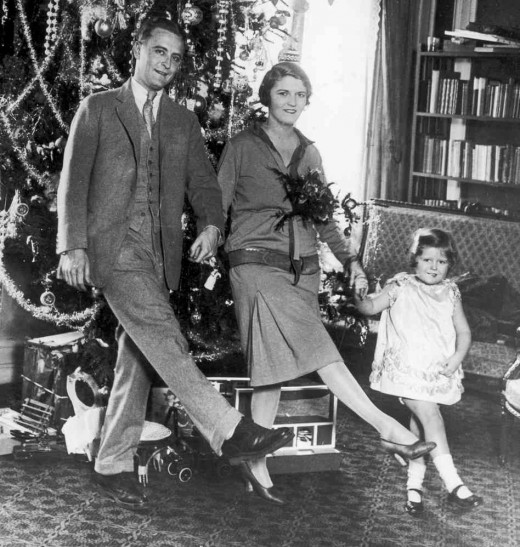
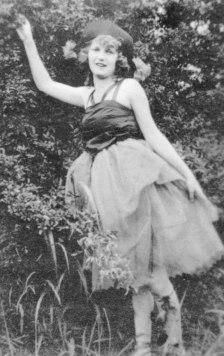
Fitzgerald's Novels
Which F. Scott Fitzgerald novel have you read?
Life in France
Soon after their marriage, the Fitzgerald's moved to France, first to Paris and then to Antibes on the French Riviera. Paris in the 1920's became the most influential decade of Fitzgerald's development as a writer. Here he met Ernest Hemingway and became friends with him and the other American expatriates living in a community in Paris.
Paris was the hotspot for the 'lost generation' to gather in cafe's and galleries and this was where they came to write, to paint, to sculpt, to dance and just to gather. This was the artisitic capital of the world to the writers and artists of the world. So, it was only natural that Fitzgerald and Hemingway would meet here.
Hemingway introduced Fitzgerald to Gertrude Stein, the grand dame of the expat community in Paris. Everyone gathered in her salon and no one became a writer or artist without first paying respects to Stein. She did much to help these struggling writers and artists.
Fitzgerald helped Hemingway in his writing career and Hemingway and Fitzgerald became great friends, but Hemingway was not friends with Zelda. Hemingway described Zelda as "insane" because she encouraged Fitzgerald to drink to distract him from writing. She wanted all his attention and Hemingway saw her destructive force over Fitzgerald and couldn't stand her.
As the money began to run out, Fitzgerald began selling short stories to magazines to support them and to bring in money. Fitzgerald and Zelda now had a daughter, Frances Scott Fitzgerald, nicknamed, "Scottie" born in 1921. Fitzgerald had the responsibility of a family and an opulent lifestyle to support.
When her daughter was born, Zelda was quoted as saying, "It's beautiful and a fool - a beautiful little fool," which Scott included in his novel, Gatsby. Daisy Buchanan, a main character in the Gatsby novel, expresses a similar hope for her daughter.
Hemingway began to see Fitzgerald and his selling of short stories to magazines as 'selling out' and this caused friction in their friendship and the friendship began to cool. Hemingway felt Fitzgerald should be concentrating on writing novels and not fooling around selling short stories to magazines who edited his work to fit their subscribers' desires.
About this time, Fitzgerald and Zelda moved to Antibes, France on the Riviera as Fitzgerald became engrossed there in writing his novel, The Great Gatsby. During this time, Zelda entered into an affair with Edouard Jozan, a French pilot. She felt bored and isolated as Fitzgerald was so consumed and intensely into his novel writing.
As a result of the affair, Zelda asked Scott for a divorce. Scott's response was to lock her in their bedroom until she dropped the divorce request. Jozan, in the meantime, left the Riviera and the Fitzgeralds never saw him again. Jozan later told Zelda's biographer that nothing had happened, the infidelity was imaginary, and both had had a need for drama.
But, for Scott, this affair was devastating. The lost illusions he wrote about in Gatsby were the lost illusions he had in Zelda's fidelity. The novel reflects the dramatized and pivotal aspects of his and Zelda's love, courtship, break, restoration of financial success and the Jozan betrayal. Fitzgerald is quoted as saying, "I knew something had happened (to the marriage) that could never be repaired."
The Fitzgerald's kept up appearances to friends as seemingly happy, but soon Zelda overdosed on sleeping pills. They decided they needed a vacation so they then celebrated the publication of Gatsby with a trip to Rome and Capri, but both were unhappy and unhealthy during the trip.
Fitzgerald met again with Hemingway after 1925 in Paris and did much to help promote Hemingway's career. Because Zelda disliked Hemingway so much, at this time she accused Scott and Hemingway of a homosexual affair, but it was just not true. Her erratic behavior continued as time went on.
Another example of Zelda's erratic behavior was seen at a Paris party while Fitzgerald was talking with Isadora Duncan. Zelda threw herself down a flight of marble stairs because Scott was ignoring her and there were more and more of her erratic, dramatic scenes.
Zelda felt bored and isolated when Scott wrote, so she decided to embark on reviving a career as a ballerina. She became obsessed with having a dancing career and would practice eight hours a day to the point of exhaustion.
She also began writing short stories for magazines and magazine articles trying to carve out an artistic identity of her own. Scott resented this and their marriage became fueled by more alcohol, jealousy, resentment, and vitriolic acrimony.
Between Fitzgerald's increasing alcoholism and Zelda's growing instability, strain was put on the marriage and by the end of the 1920's, they left Paris and returned to America.
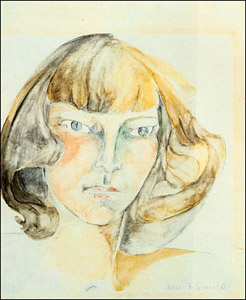
Fitzgerald's last decade.
Upon return to the United States Fitzgerald and Zelda were ill, exhausted and burnt-out. Zelda was soon admitted to the Sheppard Pratt sanitorium in 1930 in Maryland. She was diagnosed with either schizophrenia or bi-polar disorder, depending on which research is read. And, it was here that she wrote her semi-autobiographical novel, Save Me the Waltz, which was published in 1932.
Scott was furious because she had used material from their life together, thought he did the same in Gatsby and Tender is the Night (1934) The two his and her novels give contrasting portrayals of the couple's failing marriage.
Zelda had hoped with the publication of her novel that she would rise above "back seat driver about life" and earn respect for her own accomplishments and establish herself as independent of her husband.
Zelda, also embarked on a painting career and and continued writing, but nothing more written by her was ever published. Zelda's emotional health remained fragile and for the rest of her life she remained institutionalized.
In the meantime, with Zelda institutionalized, Fitzgerald moved to Hollywood in 1937 to work as a screenwriter under contract for MGM. He was in dire financial straits because of their over-the-top lifestyle and Zelda's medical bills and so he took the job, though he always felt it was degrading.
He actually wrote the screenplay for the film, Madame Curie, but received absolutely no screenwriting credit for the film. This further depressed him and increased his drinking. By 1939, MGM had ended its contract with him and he became a freelance screenwriter in Hollywood.
As time went on, Fitzgerald and Zelda became more estranged as she continued living in mental institutions on the East coast and he was living and trying to work on the West coast. His problems with his wife, his egoism and his self-confidence continued to affect his alcoholism. Fitzgerald finally took a lover in Hollywood, gossip columnist Sheilah Graham. They were together when he died of a heart attack brought on by alcoholism at age 44 in 1940.
Fitzgerald died thinking he was a failure as a writer, at marriage, and certainly at life. His greatest novel, The Great Gatsby, was received well and thought highly of by other writers and novelists at the time, but the public was never enthused with the book.
It was not until WWII - 1950's that Gatsby was finally acclaimed and became required reading in high schools and colleges. Today, it is a constant best seller.
After Fitzgerald's death, Zelda saw that his unfinished novel was completed and published in 1941.
Zelda died in 1948 in a mental institution that caught on fire, and also died believing she was a failure. Today, Zelda is seen as a brave and talented woman and as the victim of an overbearing man. Her novel is seen as charming, amusing and of moving the reader. Zelda's paintings are seen as quite good as her art was influenced by Van Gogh and Georgia O'Keeffe.
Both are buried together in a marked grave in Maryland.
The Zelda and F.Scott Fitzgerald tragic marriage and relationship is seen today as similar to the one between Sylvia Plath and Ted Hughes.
The Fitzgeralds' work and artistry today is more popular than during their lives which has happened to many writers and artists. But one thing they did do, they captured the Jazz Age in their life and writings as no other couple did or could.


